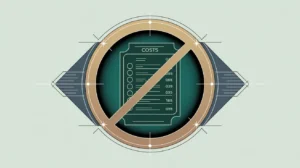Importance of Adjustments for Non-Cash Items
Adjustments for non-cash items are essential in nonprofit financial reporting because they reconcile the difference between accrual-based net assets and actual cash flow. These adjustments ensure that the Statement of Cash Flows accurately reflects liquidity rather than paper gains or expenses. For nonprofits in social innovation and international development, this is especially important because financial health cannot be judged solely by surpluses or deficits in the Statement of Activities. Depreciation, in-kind contributions, and unrealized investment gains or losses all impact reported results but do not directly affect cash. Donors, boards, and regulators rely on these adjustments to see whether an organization truly has the cash available to sustain operations.
Definition and Features
Adjustments for non-cash items refer to accounting entries that impact net assets but do not involve actual cash movement.
- Depreciation: Systematic allocation of the cost of long-term assets over their useful lives.
- In-Kind Contributions: Donations of goods or services recorded as revenue and expense but not as cash.
- Unrealized Gains/Losses: Changes in the market value of investments that are recorded in the books but not yet realized through sale.
These adjustments are made in the operating activities section of the Statement of Cash Flows when using the indirect method. They ensure that only true cash inflows and outflows are reflected in the final net cash from operations.
How This Works in Practice
In practice, nonprofits begin with the change in net assets (from the Statement of Activities) and then adjust for non-cash items to determine actual operating cash flow. For example, if a nonprofit reports $100,000 in depreciation expense, this reduces net assets on an accrual basis but does not reduce cash, so it is added back in the cash flow statement. Similarly, donated medical supplies received in-kind increase both revenue and expenses but have no cash effect, so they are excluded. Unrealized investment losses may reduce reported net assets but not cash, requiring an adjustment. Finance teams carefully document these items to ensure transparency and compliance with accounting standards.
Implications for Social Innovation
For nonprofits in social innovation and international development, adjustments for non-cash items highlight the distinction between accounting performance and real financial capacity. Many organizations report large in-kind contributions (such as donated food or medicines) that inflate revenues and expenses without increasing cash. Without adjustments, stakeholders might mistakenly interpret financial strength or weakness. Transparent reporting of non-cash adjustments reduces information asymmetry by clarifying what resources are liquid and available for mission delivery. Boards, donors, and partners can then make better decisions about sustainability, funding strategies, and risk exposure. By managing and communicating non-cash adjustments clearly, nonprofits demonstrate both accountability and a nuanced understanding of their true financial position.







